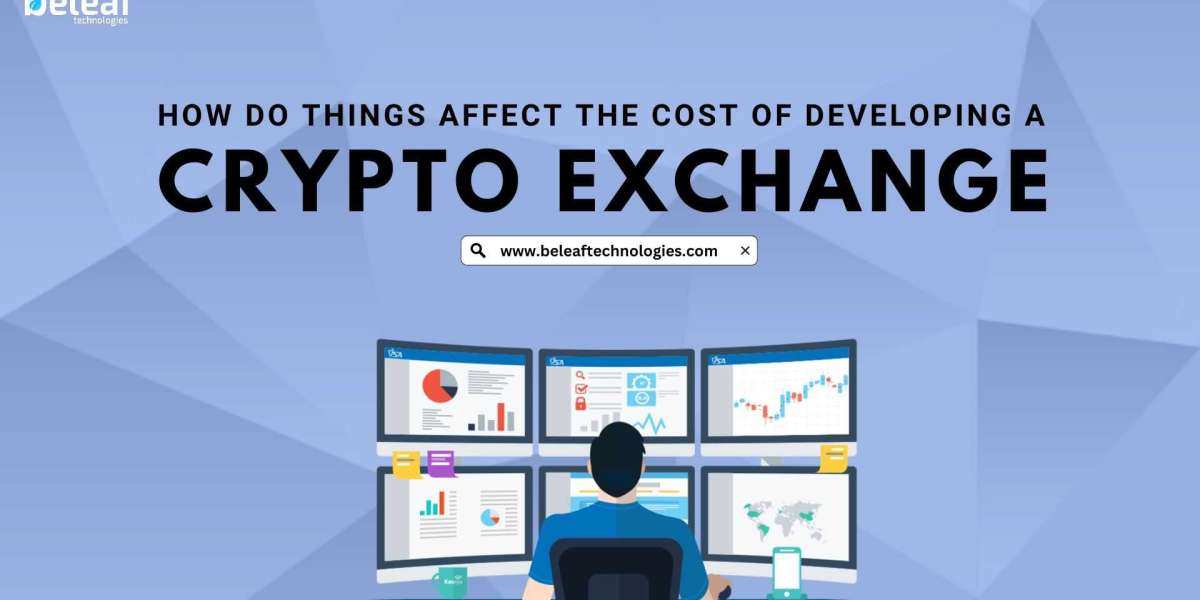Developing a cryptocurrency exchange involves significant costs. For retail investors and startup owners, understanding these cost factors is crucial. This article explores the key elements that influence the cost of developing a crypto exchange, focusing on security protocols, return on investment (ROI), and strategies to minimize expenses.
Type of Exchange
The type of exchange you choose—Centralized (CEX), Decentralized (DEX), or Hybrid significantly impacts costs. CEXs are typically more expensive due to robust security and regulatory compliance, while DEXs require advanced blockchain skills but can be less costly.
Development Team
Hiring a skilled development team is crucial. Costs vary based on location, expertise, and project complexity. A team experienced in blockchain technology and cybersecurity will ensure a secure and efficient platform but will command higher fees.
Security Protocols
Implementing advanced security measures like two-factor authentication (2FA), cold storage, multi-signature wallets, and regular security audits is essential. These measures increase development costs but are crucial for protecting user assets and building trust.
User Interface and Experience (UI/UX)
A user-friendly interface and seamless user experience are critical for attracting and retaining users. High-quality UI/UX design can drive up costs but is essential for the success of the exchange.
Integration with Third-Party Services
Integrating third-party services such as payment gateways, liquidity providers, and KYC/AML compliance tools adds to development costs but is necessary for smooth operation.
Scalability
Planning for scalability from the outset can save costs in the long run. A scalable architecture ensures the exchange can handle increased traffic and transaction volumes as it grows.
Maintenance and Support
Ongoing maintenance and support are essential for continuous operation. Budgeting for regular updates, bug fixes, and customer support ensures the platform remains secure and functional.
Regulatory Compliance
Compliance with regulatory requirements varies by jurisdiction and can significantly impact costs. Ensuring adherence to local laws and regulations is crucial for avoiding legal issues and building user trust.
Hidden Techniques to Optimize Development
1. Modular Architecture: Allows for easier updates and scalability, reducing long-term maintenance costs.
2. Automated Testing: Reduces manual testing costs and ensures reliability.
3. Cloud-Based Infrastructure: Offers scalability and cost-efficiency with flexible pricing models.
4. Microservices Architecture: Enhances performance and scalability by dividing the application into smaller, independent services.
5. Blockchain Interoperability: Attracts a broader user base by supporting various cryptocurrencies and blockchain protocols.
6. Advanced Analytics: Provides insights into user behavior and market trends, optimizing performance and user experience.
7. Community Building: Drives user engagement and loyalty through social media, forums, and events.
8. Educational Content: Attracts and retains users by offering webinars, tutorials, and articles on cryptocurrency trading and security practices.
Return on Investment (ROI)
Calculating ROI involves considering initial development costs and potential revenue streams like trading fees, listing fees, and withdrawal fees. A well-designed exchange with a strong user base can yield substantial returns.
Strategies to Minimize Costs
1. White-Label Solutions: Reduce development time and costs.
2. Outsource Development: Manage expenses by hiring developers from regions with lower labor costs.
3. Focus on MVP: Start with a Minimum Viable Product (MVP) to test the market before adding features.
4. Open-Source Solutions: Cut down on licensing fees and development time.
Conclusion
Knowing what affects the cost of developing a crypto exchange helps investors and startup owners make smart choices. Using strategies to save money can increase profits while keeping the exchange safe and legal. If you're considering developing a crypto exchange, it's important to carefully evaluate these factors and plan accordingly. Thorough research, strategic planning, and leveraging expert advice can help you navigate the complexities and make informed decisions that align with your goals. Working with a trusted cryptocurrency exchange development company can make the process easier and more successful.
Contact details
Whatsapp: +91 7904323274
Telegram: @BeleafSoftTech



